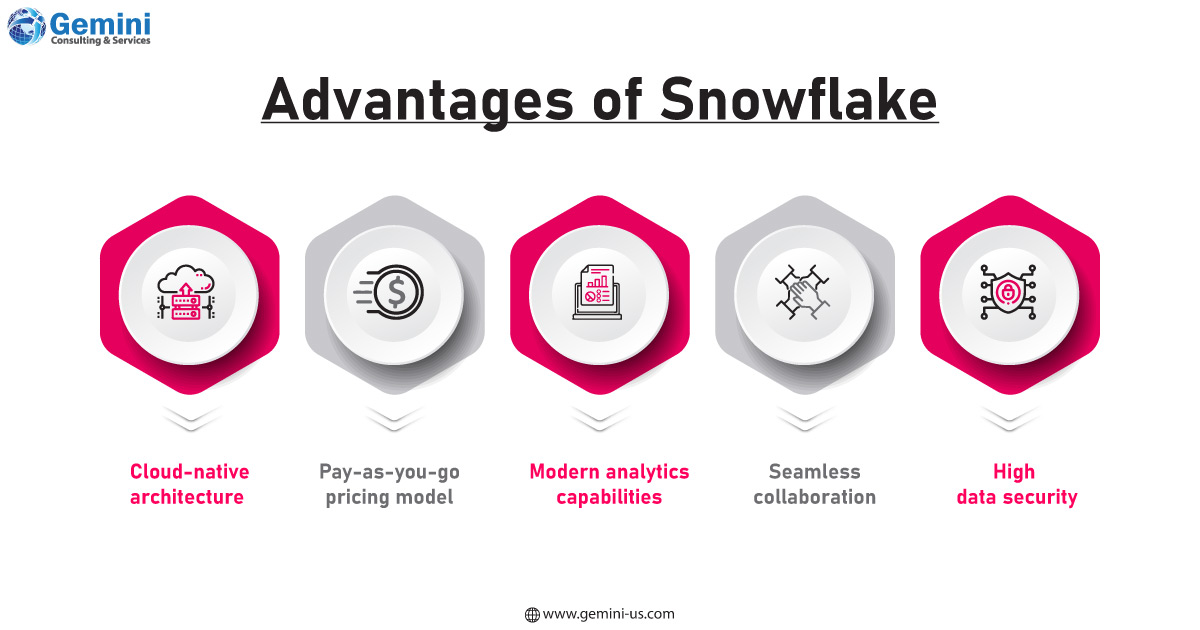In the area of Relational Database Management Systems (RDBMS), Oracle has made a significant impact. It has set industry standards and played a crucial role in the development of enterprise-level data management solutions. However, with the evolution of technology and the increasing significance of the cloud in a data-driven market, organizations are looking for new possibilities.
The migration from Oracle to Snowflake emerges as a strategic move, capitalizing on cloud capabilities and aligning businesses with the agility and innovation demanded in the digital era. Snowflake, a cloud-native data platform, not only promises enhanced efficiency but also signifies a paradigm shift in data management.
According to Statista the global cloud storage market achieved a valuation of $90.17 billion in 2022. Projections for anticipated growth suggest an escalation to $108.69 billion in 2023 and a substantial surge to $472.47 billion by 2030, with an estimated compound annual growth rate of about 23%.
In this blog, we explain the intricacies of the Oracle to Snowflake migration process, unraveling essential considerations, best practices, and insights to ensure a smooth and seamless transition for organizations.
Oracle to Snowflake Migration: Understanding the Shift
The landscape of data has undergone significant transformations, marked by changes in volume, variety, and velocity. Concurrently, advancements in storage and computation technologies, coupled with the rise of cloud computing, have spurred organizations to transition their data management to cloud-native platforms like Snowflake.
The cloud has emerged as a cornerstone in modern IT delivery, offering unlimited concurrency, high availability, and efficiency. It operates seamlessly, providing on-demand, flexible, and cost-effective solutions, prompting organizations to rethink their data strategies.
In the era of data-driven decision-making, the demand for modern analytics solutions has surged. Businesses are in search of dynamic tools capable of extracting actionable insights from expansive and diverse datasets, steering them towards a future centered around data-driven strategies.
As technology evolves, traditional platforms struggle to keep pace. Upgrades often fall short, necessitating contemporary analytics solutions that are not just advanced but also intuitively responsive, allowing businesses to focus on insights rather than grappling with complex infrastructure.
Why Snowflake?

Snowflake’s cloud-native architecture stands out for its unparalleled scalability, allowing organizations to effortlessly expand their data infrastructure in response to evolving business needs. Its flexibility accommodates dynamic workloads, ensuring optimal performance.
The cloud-based model of Snowflake presents a cost-effective alternative to on-premise solutions. The pay-as-you-go pricing model aligns expenses with actual usage, minimizing unnecessary costs for organizations.
Snowflake’s modern analytics capabilities empower businesses to derive actionable insights from their data, supporting advanced analytics tools and techniques. This positions organizations to make informed decisions based on robust data analysis.
By leveraging cloud technology, Gemini Consulting & Services can facilitate enterprises in migrating from Oracle to Snowflake. Contact Us,to align with the trend of transitioning to cloud-native platforms for streamlined operations and resource optimization.
Migrating to Snowflake equips organizations with a future-ready data platform, ensuring relevance and competitiveness in the ever-changing digital ecosystem. Snowflake’s optimized architecture enhances query execution and data processing capabilities, resulting in faster and more efficient data operations.
Snowflake’s cloud-based approach fosters global accessibility, enabling seamless collaboration and data sharing across dispersed teams — a critical aspect in today’s interconnected business environment.
The platform places a strong emphasis on security, ensuring data integrity and compliance with regulatory standards. The migration to Snowflake enhances data security, providing peace of mind to organizations handling sensitive information.
As the digital landscape evolves, migrating to Snowflake becomes a strategic move to future-proof data infrastructure so that organizations can remain agile and flexible leverage emerging technologies and trends. The growing community and ecosystem of integrations further contribute to the motivation for migration, enhancing the overall value proposition of Snowflake.
Key Considerations for Migrating from Oracle to Snowflake
- Conduct a thorough assessment of your existing Oracle environment and clearly define migration goals and objectives.
- Identify critical data, applications, and dependencies that need to be migrated.
- Secure support from key stakeholders and decision-makers by effectively communicating the benefits and objectives of the migration.
- Identify potential risks associated with the migration and develop effective mitigation strategies.
- Map Oracle data structures to Snowflake equivalents and ensure data cleanliness and optimization for the target platform.
- Validate the compatibility of applications and scripts with Snowflake through rigorous testing.
- Choose appropriate migration tools and methods based on the complexity and scale of your data.
- Evaluate options for bulk data transfer and schema migration to streamline the process.
- Develop a phased rollout plan for the complete migration, prioritizing less critical systems for initial migration.
- Implement monitoring tools to track performance and usage during and post-migration.
- Continuously optimize configurations for efficiency and fine-tune Snowflake settings based on post-migration analysis.
Overview of Migration Tools

Several widely used migration tools can facilitate the transition from Oracle to Snowflake, including AWS Database Migration Service (DMS), Talend, Informatica, Microsoft Data Migration Assistant (DMA), Attunity Replicate, Matillion, Flyway,AWS Glue, SnapLogic, and Striim.
When deciding on a migration tool, it’s essential to consider factors like the complexity of your data, the scale of the migration, and the specific features offered by each tool. Additionally, ensure that the selected tool aligns with your organization’s data integration and migration requirements.
The shift from Oracle to Snowflake signifies a strategic move towards a more agile, scalable, and cloud-native data management approach. This migration is not just about transferring data. It presents an opportunity to optimize workflows, embrace modern analytics, and future-proof your data infrastructure. As you embark on this transformative journey, meticulous planning, thorough testing, and selecting the right tools will pave the way for a smooth and efficient migration.



